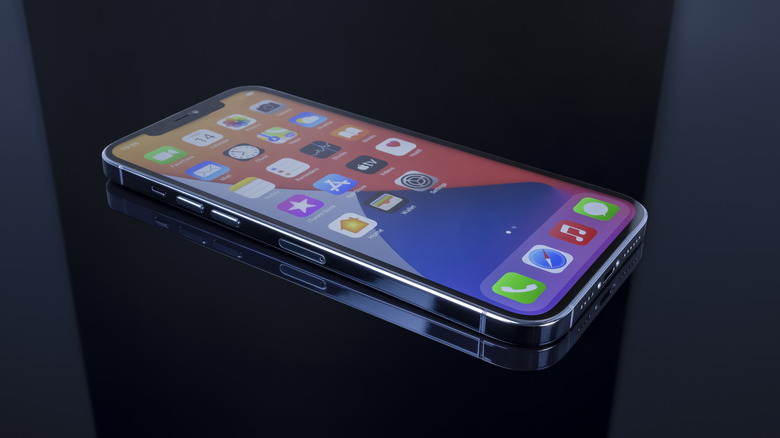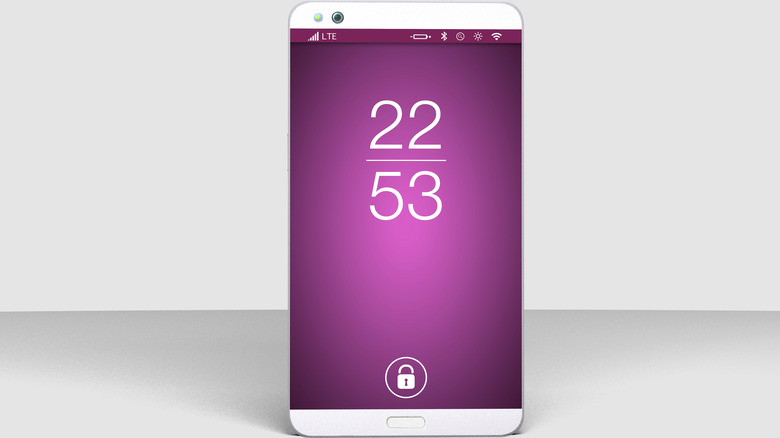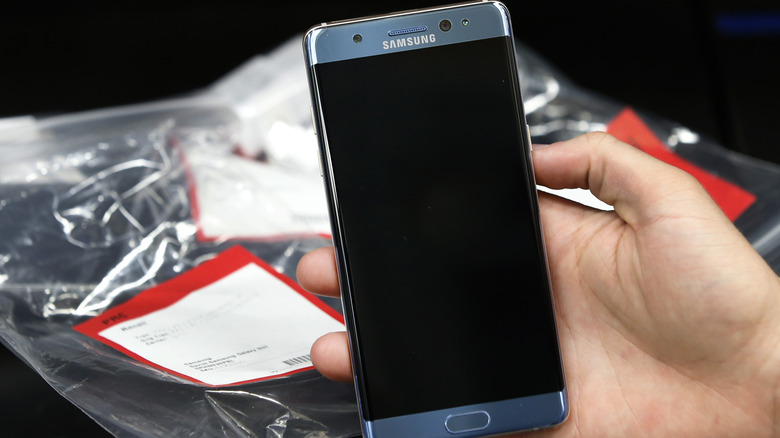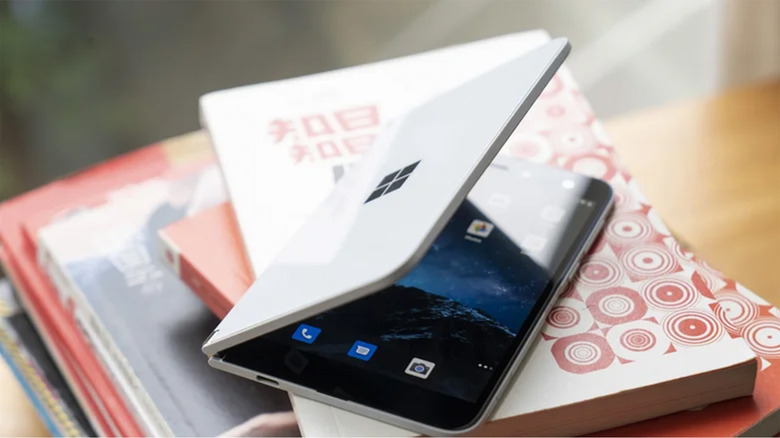
Manaemedia/Getty Images
By Joe Hindy/
There are plenty of reasons to buy a used smartphone instead of a new one. They cost less, are readily available, and going one or two generations back won’t have a massive impact on performance in most cases. Refurbished options are also good choices since they have been professionally fixed and are ready for service, while still costing less than a new phone. Plus, with how OEMs update nowadays, many phones even two or three years old are still getting OS updates and security updates to this day.
But just because it’s a good deal doesn’t mean it’s always a good idea. Lots of phones that you can find in the used market have floundered for one reason or another. Just like cars, laptops, or any other product, some generations just had problems out of the gate that can’t be fixed. These phones should be avoided at all costs. Also, when shopping for a used smartphone, there are some other things you should check into as well.
Below are some smartphones that you should probably avoid buying even if you find a good deal. For this list, we looked at phones that might actually be dangerous to the end users, have some sort of unfixable software or hardware issue, or were otherwise abandoned soon after launch, thus preventing users from seeking support or repairs if something goes wrong. This list is by no means exhaustive, so make sure to investigate any phone you intend to buy on the used market.
Red Hydrogen One
The Red Hydrogen One is a great example of a used smartphone that you shouldn’t buy. The phone had a ton of promise when it first launched, especially given that Red is a big player in digital video cameras. It launched for $1195 for the regular variant and $1595 for the titanium variant. Such prices aren’t entirely uncommon today, but it was still a king’s ransom even by today’s standards.
The phone had a lot of unique features, including a 3D holographic display and cameras that could record video in the company’s proprietary 3D format plus allow users to attach lenses that would allegedly launch later. It also featured an unusual design, with a mix of plastics, metals, and rubberized material that certainly made it easy to pick out of a lineup of other phones. It had all the hallmarks of a potentially fun phone that wasn’t afraid to try something different.
Alarm bells started going off when the phone was delayed multiple times. It eventually launched with the prior year’s flagship specs, making its price tag seem even worse than it already was. The 3D display ended up being mediocre, according to reviews, and made people dizzy. Finally, the company never released its promised camera add-ons and eventually shut down its mobile division entirely. There are Red Hydrogen Ones still available on resale sites like eBay, but they are dead in the water with no software support and a bunch of features you can’t use.
The Essential Phone
The Essential Phone actually had a pretty decent run when it was still a newer device. It was best known as a simple phone that ran an unskinned version of Google Android. It also featured a design that minimized bezels more than most phones of its era, months before the iPhone X did it. Notably, it was one of the first phones to launch the latest version of Android the same day that Pixel devices received it, a feat it accomplished twice with Android 9.0 and Android 10.0 in 2018 and 2019.
Not a bad phone for its era, it was reviewed well but wasn’t without its flaws. For instance, the phone was fairly bare bones and didn’t have a unique feature that separated it from others, like the Galaxy Note series did with its S-Pen or Pixel devices did with their outstanding camera software. Additionally, the camera was just okay and didn’t feature video or photo stabilization. The battery life was also middling. In all, the phone was just mediocre.
The main reason you shouldn’t buy one, however, is because Essential no longer exists as a company. Instead of releasing an Essential Phone 2, the company instead opted to shut the doors for good in 2020. That means if you buy the phone, there is no company there to support you if anything goes wrong. Plus 2018 was a long time ago — for a little more money, you can get something more modern with better overall specs.
All LeEco phones

Kaptnali/Getty Images
You’d be forgiven if you’ve never heard of LeEco before. The Chinese company has existed mainly outside of the U.S. for most of its lifespan and sells electronics primarily in China. It’s a newer company, founded in 2010, that blew up in China and attempted to take the U.S. by storm in 2016. Its first U.S. phones were the LeEco Le Max 2 and Le S3, along with the LeEco Pro 3. These were budget devices even back in their day and didn’t resonate much with the American public.
As a result, LeEco exited the U.S. just one year later. The company announced it was laying off almost its entire U.S. staff and even sold its property in Silicon Valley. With that, the company disappeared as quickly as it showed up, having seen virtually no success in the U.S. during its brief stint. There are myriad reasons why LeEco failed at selling smartphones, although the company still sells other products, including 4K TVs, overseas.
The reasons you shouldn’t buy any LeEco phones are twofold. For starters, they were budget products even when they launched eight years ago. They would struggle to run today’s apps and services, lending to a poor experience even when compared to newer phones at the same price point. Secondly, the company no longer operates in the U.S., so if you have any questions or concerns, there is no one to help you.
Any LG phone from 2015 and 2016
LG typically made pretty decent smartphones: you can still find phones available on eBay for fairly reasonable prices, like the pretty great LG V60. It had flagship specs from its era, one of the best headphone jacks ever, and a huge battery even by today’s standards. Unfortunately, not all of LG’s phones have been smash hits and there are definitely some that should be avoided at all costs. They include any phone the brand released in 2015 and 2016, including the LG V10, V20, G5, G6, and the Google Nexus 5X.
The reason is because these phones had a hardware defect that could potentially cause them to bootloop. The issue was caused by the device’s internal EMMC chip, which would eventually become loose and disconnect over time as the devices heated up and cooled down repeatedly. Once the EMMC disconnected, the phone became inoperable and would bootloop until the battery died or until it was shut off. LG was sued over the issue and eventually agreed to a settlement, with the brand expanding its warranty on these devices to cover potential failures.
You should avoid any phones involved in the bootloop issue. They have a hardware problem that can’t be fixed unless you’re very comfortable with soldering and can get your hands on a replacement EMMC chip. In addition, LG quit the mobile business in 2021. So not only do these devices have a hardware defect, but LG’s mobile division isn’t around anymore to do anything about it.
Samsung Galaxy Note 7

George Frey/Getty Images
The Samsung Galaxy Note 7 is the first device on the list that is actually dangerous. It started life well enough, garnering positive reviews from just about everywhere. It had beastly specs for its day, along with a good camera, a modern design for its era, and one of the best displays on a phone up to that point. It was primed to be one of Samsung’s best phones ever, but there was a slight issue. The phone had a tendency to burst into flames.
Note 7 models started catching fire at an alarming rate during 2016. It would happen in cars, planes, and even on nightstands while charging. Samsung’s investigation of the fires determined that high welding burrs, missing insulation tape, and incorrectly made negative electrodes were responsible for the vast majority of the accidents. In short, there was an issue with Samsung’s manufacturing process that caused its batteries to catch on fire. Samsung eventually recalled the devices at great expense.
Used Note 7 devices are still available, although in fairly small numbers, and it’s obvious why you should stay away from them. Even if you wind up with one, they are permanently banned on airplanes, so you won’t be able to travel with it. This applies to both the original and post-recall versions of the phone, which both had battery defects that could cause the phone to spontaneously combust. Do yourself a favor and grab a different phone.
Any phone with a Snapdragon 810 or 808
2015 wasn’t a great year for Android smartphones. We talked previously about the LG bootlooping issue, which started around then, but the rest of the industry wasn’t faring much better due to the Snapdragon 810 and 808 processors. That included flagship phones such as the HTC One M9, Sony Xperia Z5, OnePlus 2, LG G Flex 2, Nexus 6P, and many others. Any phone with the Snapdragon 810 and its slightly less powerful sibling, the Snapdragon 808, all had the same problem. They would overheat, which would cause device performance to crater.
Initially, there didn’t seem to be much wrong, until reviewers found that devices equipped with the Snapdragon 810 not only benchmarked poorly but were so hot that they were unable to sustain any level of consistent performance. The processor would throttle immediately under any sort of consistent load, to the point that the CPU was running at a fraction of its advertised speed. OEMs had to use a number of creative software tweaks to fix things or else their devices would simply be too hot. The resulting tweaks lowered performance, but at least the devices could stay cool.
The lower-powered Snapdragon 808 didn’t have the overheating issue, but Qualcomm had to dial back the power to such an extent that devices equipped with it didn’t feel great to use. There likely aren’t a bunch of 2015 flagship phones available for sale these days, but if you spot one, it’s best to choose a different year’s vintage.
Snapdragon 8 Gen 1 phones
The Snapdragon 810 wasn’t the only CPU that Qualcomm released that had issues. The Snapdragon 8 Gen 1 was also less than optimal. Unlike many of Qualcomm’s prior chips, the Snapdragon 8 Gen 1 was fabricated by Samsung Foundry instead of one of Qualcomm’s other suppliers. With the chip almost as bad as the Snapdragon 810 and 808, it did lead to a less than optimal year for Android smartphones. Phones equipped with the chip included the Galaxy S22 series, Moto Edge 30, OnePlus 10 Pro, Asus ROG Phone 6s Pro, and most other flagship Android phones that launched in 2022.
The issue was similar to the Snapdragon 810: The chip ran hotter than expected, which caused throttling. Qualcomm refreshed the series with the Snapdragon 8 Plus Gen 1, which was made by TSMC. The new chip not only ran cooler, but was also more efficient, allowing for even better performance despite being similar in terms of specs. The two chips being released in the same year helped drive home how inefficient the Snapdragon 8 Gen 1 was.
Additionally, some phones had it worse than others. For example, there were plenty of reports of the Redmi 3 Pro having overheating issues with it. Some devices would drop as much as 40% in performance when gaming. While phones equipped with the Snapdragon 8 Gen 1 are certainly still usable, you can get used Snapdragon 8 Gen 2 phones these days that run much better for a little more money.
Any iPhone 6 or iPhone 7
iPhones hold their value pretty well and people tend to associate Apple with quality smartphones, a justifiable stance given how long Apple supports its handsets. But there were two generations of iPhones that got the proverbial shaft after they left store shelves: the iPhone 6 and the iPhone 7, along with the iPhone SE. For the iPhone 6 series and iPhone SE, the problem was introduced with iOS 10.2.1, while the iPhone 7 received it when it was updated to iOS 11.2.
As the story goes, Apple released software updates that throttled the performance of the aforementioned phones. Apple said that the changes were made «to deliver the best experience for customers» at the time. Technically speaking, Apple reduced the performance of the phones to decrease the likelihood of sudden shutdowns that occurred due to the aging process of lithium-ion batteries at the time. Users noticed the problem and launched a class action lawsuit against Apple. Apple eventually settled the lawsuit for $500 million.
Apple never removed the performance decrease and now none of those devices are actively updated by the company anymore. Those two issues alone are the best reasons to avoid them. It also helps that there are used iPhones from more recent generations that don’t have the performance issues, while also running newer versions of iOS. In this case, we recommend bypassing these phones, even if you can get them at a good deal, and opt for a newer used iPhone instead.
The Samsung Galaxy Fold
Samsung’s first attempt at a foldable phone was a mixed experience. It was definitely the most cohesive foldable phone to hit the market at the time but like many of its peers, it was wrought with issues. The phone launched with a $1,980 price tag to go with its two-display design that Samsung has kept through the most recent Galaxy Fold 5. But while it looked like all of its eventual successors, the original Galaxy Fold was a bit of a nightmare.
On top of its high price tag, the device had several mechanical issues. For instance, the hinge mechanism was prone to getting dust in it, which eventually degraded the quality and functionality of the hinge. It also came with a screen that looked like it had a screen protector on it. If that part was peeled off, it broke the screen entirely. While the phone seemed to be a technological marvel, it was also shockingly easy to break, either through general wear and tear or accidental neglect.
Not only do we list it as one of the 10 worst smartphones of all time, but we insist that you look for a different used foldable phone if you want to go that route. Even the Galaxy Fold 2 introduced improved dust and water resistance, although it doesn’t carry any official ratings. The original Galaxy Fold would be a neat addition to a collection, but it’s not suited for daily use.
Microsoft Surface Duo

Jack Skeens / Shutterstock
The Microsoft Surface Duo was a unique device that featured a clamshell design with two screens on the inside, similar to the LG V60 if you opted for the V60’s dual screen case. The distinctive design made it a one-of-a-kind phone, but that is as bad as it is good in this instance. While the Surface Duo definitely made waves when it launched, it was typically for the wrong reasons, and a lot of folks bought into the hype and ended up regretting it.
The Ars Technica review says it best: «The Surface Duo feels like a phone that was slapped together without a plan, and the reports of the phone’s history indicate that’s what actually happened.» The design required users to open the phone whenever they wanted to interact with it, which added an additional step when using it. It didn’t help that the displays were oddly shaped and, when mixed with the hinge mechanism, made one-handed use more difficult. Microsoft’s software was also perpetually buggy. It got a bit better after launch, but not much.
To Microsoft’s credit, the company did support the phone for three years. However, the phone simply never turned the corner into actually being enjoyable to use. While you can still find the Surface Duo for sale on sites like eBay, it’s best to avoid it unless you want this oddity for a specific purpose. It wasn’t a good daily driver when it was new, and it’s not a good daily driver now.